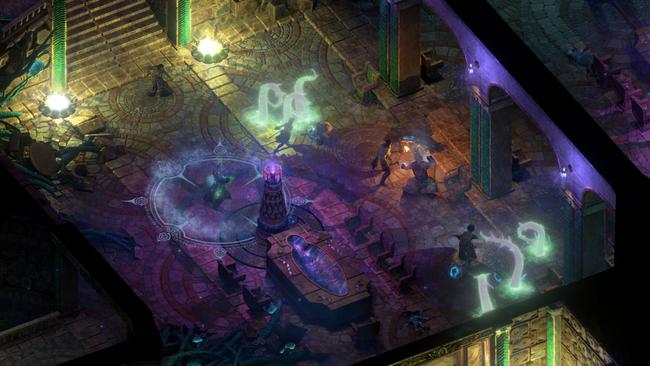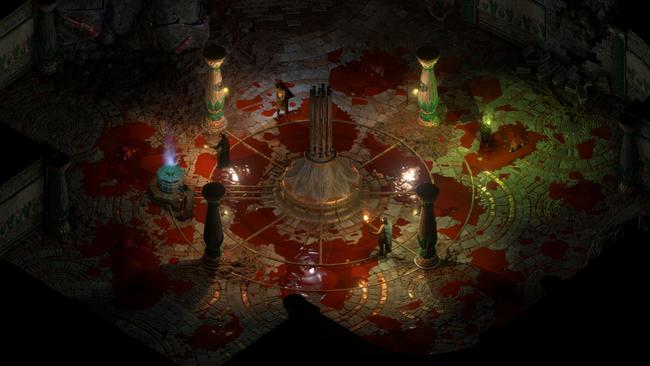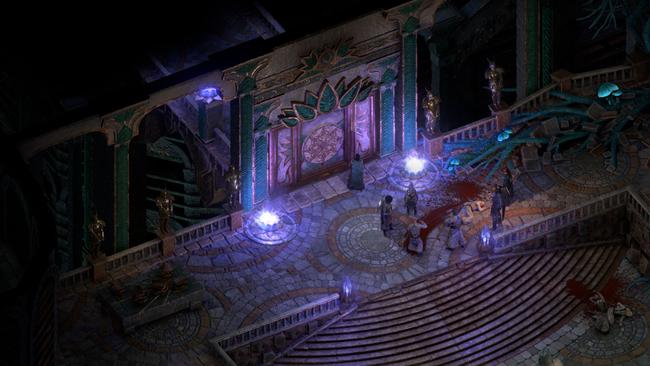
Pillars of Eternity II: Deadfire - The Forgotten Sanctum Review
I didn't have very high hopes going into Pillars of Eternity II : Deadfire's last DLC offering in The Forgotten Sanctum. The first two pieces of Deadfire's post-launch content both fell pretty flat for me: Beast of Winter felt merely like a stand-alone vehicle to reference some of Eternity's more esoteric lore while Seeker, Slayer, Survivor felt entirely inconsequential and frankly -- boring. However, not only did the completionist in me still want to see this through to its conclusion, the CRPG fan in me isn't sure if or when we'll ever see another game like this from Obsidian, which sort of gives this entry a bit more weight.
With the revealing of The Outer Worlds just a week before Sanctum's release alongside the studio's recent acquisition by Microsoft beyond that, suddenly this little download finds itself in a bit of a different light -- it's a little more than just Deadfire's last DLC, but potentially Obsidian's last contribution to the 'CRPG Renaissance' of the last handful of years.
Luckily, it seems like Deadfire is going to go out on a relatively high note.

The Forgotten Sanctum opens up slightly differently from the earlier two DLCs, in that you have to be pretty far into the game in order to even access it. Around the time of the penultimate story-critical quest 'He Waits in Fire', you'll eventually come across an event involving an earthquake, and will subsequently be greeted by the archmage Llengrath, who returns after originally debuting in The White March - Part II, the second of two DLC add-ons to the original Pillars of Eternity.
From the outset, this is how The Forgotten Sanctum differentiates itself from the nearly entirely stand-alone Beast of Winter. While the two DLCs share many parallels ranging from their manner of incorporation into the main game, dungeon design, and singular focus on one member of Eora's pantheon of gods (Rymrgand in Winter's case and Wael here), Sanctum at least attempts to bridge its largely self-contained story into the game-at-large. Not only does Llengrath make a somewhat surprising return appearance, but events from Deadfire such as the incident of Bekarna's Observatory tie into both Sanctum's primary questline as well as its optional content. Additionally, the events of Sanctum's ending will affect the conclusion of Deadfire's main quest as well. In this manner, Sanctum steps just a bit past the near "filler" status of the earlier two entries.
While some of these connections are merely surface level, such as a passing dialogue option that reinforces the player-character's familiarity with Llengrath (even if the players themselves have forgotten her), it at least allows for Sanctum to build upon existing lore and world-building instead of finding an empty pocket of space (including literally on the world map) and placing a story and dungeon there. By also referencing back to events at Arkemyr's Manor and the Observatory, there's a sort of logical consistency here that wasn't found in either of the other DLC offerings. Of course the various members of the Circle of Archmagi would have knowledge of and opinions on their cohorts and the narrative threads involving them, and the banter between Llengrath and the eccentric mage Tayn relating to their group's internal political struggles is some of the best in the game.

Winter's Harbinger's Watch and Seeker's Kazuwari might as well not even exist because they are presented in a way where they care very little about the outside world, and the greater Deadfire Archipelago has a non-existent opinion of these locations and their residents. Both are pretty much completely isolated from the main thrust of the game by design. Sanctum does still feel this way slightly, but with the greater significance of the events that unfold alongside the ties to past incidents of both games, it feels more like a proper contribution to the overall package.
By shifting to be significantly more character-driven, primarily focused on a handful of members of the Circle of Magi, Sanctum is far more memorable from the outset narratively too. Tayn specifically is a highlight of the DLC, further strengthed by some phenomenal voicework that perfectly delivers his simultaneously amicable yet slightly-deceitful personality. Personally, his performance here reinforces my original opinion that voice-acting was an overall boon for Deadfire, it's that good.
Since Forgotten Sanctum is designed for players that are pretty much guaranteed to be at the level cap at this point in the game (you'd have to trying very hard to not be), it also delivers some of Deadfire's toughest challenges outside of the optional and aptly-named Mega-bosses that have been added post-launch. I eventually found myself having to suit up with effectively two healers in Xoti and Tekehu in order to not be too frustrated with the game's spooky librarian and nasty spore creatures. I actually had to micromanage some affliction removal with my healers instead of just overpowering the enemies with pure firepower, though the later could probably be achieved with the difficulty turned down, which can be done at any time.

As a pure dungeon, there's not a lot of new ground covered here, but the size of the Sanctum does extend beyond that of most other areas of Deadfire. The size of the library underneath the Black Isle is probably about 50% larger than the various planes of time found in Winter. There are a few neat mechanical wrinkles too, such as finding items in the spore-encrusted area of the Library which can be used to pacify spiders on the upper level and not have to fight them, or vice versa if you solve a mini-quest involving the creation of fungicide in the second area before traversing the first. It's a nice little bit of variety and agency in addition to the Sanctum's degree of non-linearity. It still ends a bit quickly since there's not much leading up to the proper dungeon-crawling (like Harbinger's Watch before entering the Void), but still feels altogether sufficiently dense with a few interesting subquests rounding out the primary objective.
All in all, The Forgotten Sanctum is a strong way for Deadfire, and possibility Pillars of Eternity in general, to end-- at least for the moment. It lacks a certain level of gravitas that perhaps would usually be expected out of a proper conclusion, but its strengths lie in the same places that Deadfires' always have - motivated character writing, a solid sense of cohesion between gameplay mechanics and narrative, and the events within hold proper sense of significance as part of the world put forth. Fans of Deadfire who have been let down by lackluster additions so far should definitely not let that steer them away from this final entry.